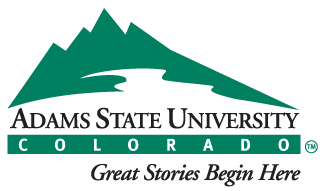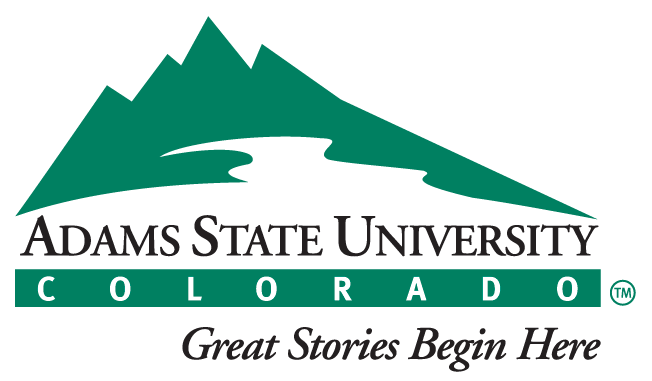Article by Pauline Victoria Martinez
Oneyda Maestas, Adams State director of CASA, gathers with students who studied folk healing.
In the southern corner of Colorado lies a little valley surrounded by majestic mountains, home to a rural people with deep roots and a rich heritage. The San Luis Valley once belonged to the Native People of the Ute tribes. It was then invaded by Spain, later it was conquered by Mexico, and eventually taken over by the United States. Here the people say they never crossed the border, the border crossed them. Locals speak a unique language that is a mix of archaic Spanish and Native words. They celebrate mixed racial and ethnic traditions, and practice the ancient art of curanderismo.
Today it is common for us to be familiar with natural herbs, homeopathy, holistic approaches to health care, and the many forms of spirituality that exist. Curanderismo is a beautiful combination of all of those things mixed with cultural traditions of folk healing.
The word curandera or curandero comes from the Spanish word "curar" which means to heal or to cure. According to curandera Elena A Vila, "A folk healer does not separate her religious and spiritual beliefs from the disease that she treats, but rather, she incorporates them into the interventions." Due to the rich history of this area the spirituality aspect to this medicine is part Christian/Catholicism, Native American, Spanish-Moorish medicine, or a combination of these.
It is an art of acknowledging the whole person and incorporating the physical, spiritual, and mental aspects of the human experience into managing overall health. Curanderismo consists of healing with teas and herbs (yerbero or herbalist), massage therapy (sobadora or massage therapist), or essential oil treatments, but the most common practice is the spiritual cleansing or "Limpia".
A study done in 1995 in East Los Angeles published findings that people relied on curanderismo when modern medicine proved unsatisfactory or ineffective. They also found that feelings that arise from those who dealt with problems of being a minority, provoked a conscious awareness of beliefs and practices that were once taken for granted. Being treated differently made Chicanos, Latinos, Mexicans, and Native Americans draw closer to their ancient traditions.
Many people in the San Luis Valley share memories and tell stories of their grandparents outdoors searching for herbs for their "remedios" (remedies) such as: Alhucema (lavender), yerbabuena (mint leaves), capulin berries, or Osha root. These herbs and roots were used to treat many ailments. Yet the tradition of oral story telling has also kept alive a fear of this ancient art of healing through stories about black magic. This was vividly demonstrated in the recent movie portrayal of a curandera in "Bless Me, Ultima." However, where there is darkness there is also an opposing force of light. In an effort to shine more light on this issue, Adams State University’s Director of the Cultural Awareness and Student Achievement Center (CASA) hosted a series of workshops lead by curandera Belinda Garcia.
Garcia chose to teach these workshops every Saturday and Monday, because she wanted to keep the story about her own grandmother alive, and educate people about the scientific foundation of this ancient art. She also wanted to do this in a culturally relevant way so that students could get to know the real stories of the people that practice curanderismo.
Oneyda Maestas, director of CASA said: "CASA received a donation from the Healthcare Foundation and we invested in this health and wellness opportunity to enhance the Hispanic Heritage programming offered by CASA to educate our campus and community more about ‘remedios caseros.’ The workshops aimed to relate the historical, botanical, medical, anthropological, folkloric and linguistic perspectives of the evolution of curanderismo. In the San Luis Valley there has been a loss of language and cultural traditions, CASA aims to empower locals who wish to reclaim their culture and share it with others."
To learn about this workshop and possible future Chicano studies or inder-divisional course offering at Adams State contact Maestas at 719-587-7687.
For Garcia and other curanderas today as in ancient times, health comes from a state of equilibrium. That delicate balance can be upset by many factors and that imbalance produces illness. Curanderismo is about "bringing wholeness, oneness, or healing to broken spirits, lost souls, and wry bodies. For the purpose of creating a union of harmony, to bring back balance, to reimagine self-worth and clear the mind," said villa.
ENDNOTES
i Luis D. Leon, "La Llorona’s Children: Religion, Life, and Death in the U.S.-Mexican Borderlands". This citation is taken from chapter 4.
ii Steven Lozano Applewhite, "Curanderismo," Health and Social Work (November 1995): 247. This citation is taken from the author’s abstract.
iii Elena A Vila, "Curanderismo: Mexican/Chicana Fold Healing and Holistic Health."


